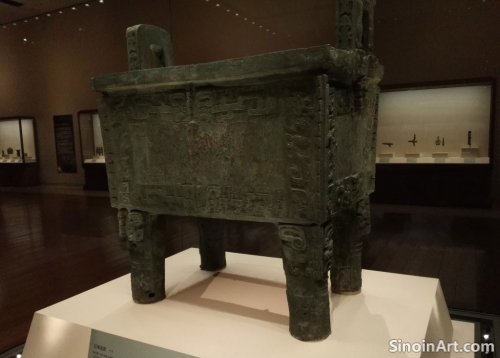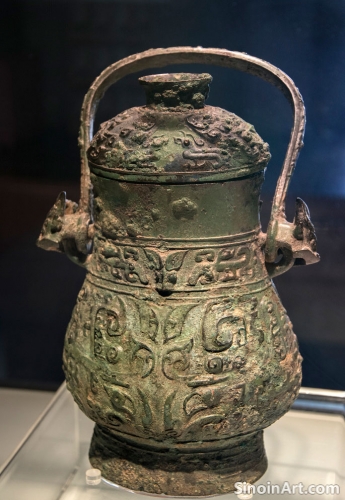Bronze Vessels and Music Performance in Ancient China: A Multi-Sensory Experience
|
The use of bronze vessels in ritual performances in ancient China was often complemented by music, creating a multi-sensory experience that engaged both the visual and auditory senses. The combination of bronze objects, music, and ritual performance helped to shape a powerful and compelling approach to religious and cultural events.  Bronze bells, chimes, and drums were often used in performances alongside bronze ritual vessels, creating a harmonious blend of sight and sound, further emphasizing the importance of ritual. The use of these different elements helped to create a uniquely engaging and immersive experience for the audiences.  The rhythms and melodies of the music were often integrated with the symbolic language of bronze artifacts, reinforcing the overall message and purpose of the performance. The careful coordination of these elements helped to enhance the overall power and effectiveness of the ceremonies.  The study of these multi-sensory experiences highlights the importance of performance and ritual in ancient Chinese society, demonstrating how visual and auditory elements combined to create a sense of power, awe, and transcendence. The combination of different art forms helped to create experiences that were both highly meaningful and highly memorable. The study of bronze ware and its use in performance helps to further illuminate the multi-faceted nature of ancient Chinese culture, connecting both the art objects with their larger cultural context. The interplay of different art forms is a hallmark of ancient Chinese culture. The combination of art and music reveals a complex and highly sophisticated artistic tradition. |
Tag : bronze performance, ancient Chinese music, ritual sound, visual culture, multi-sensory art
Related information
- The Preservation of Inscribed Bronzes: Understanding the Text and History
- The Challenge of Authenticating Ancient Chinese Bronze Ware: Forgeries and Expertise
- Exploring Chinese Bronze Ware: A Guide for Beginners
- The Use of Bronze in Ancient Chinese Musical Instruments: Stringed Instruments and Percussion
- The Evolution of Bronze Decoration: From Simple Lines to Complex Narratives
This article focuses on the preservation of inscribed bronze ware, highlighting the importance of protecting both the objects and their historical texts, detailing the techniques used for conservation and analysis, and emphasizing the ongoing academic work to interpret the inscriptions.
This article discusses the challenges of authenticating ancient Chinese bronze ware, highlighting the use of visual inspection, scientific testing, stylistic analysis, and the expertise required to distinguish between genuine artifacts and forgeries.
This article provides a guide for beginners to the study of Chinese bronze ware, outlining key periods, types of objects, common motifs, and providing a roadmap for a deeper exploration of this fascinating art form.
This article explores the diverse use of bronze in ancient Chinese musical instruments, highlighting its role in creating components for stringed instruments, percussive elements, and how it shaped the musical landscape of ancient China beyond bells and chimes.
This article explores the evolution of bronze decoration, highlighting the shift from simple geometric patterns to more complex motifs and narratives, showcasing the technical and artistic development of ancient Chinese bronze workers.